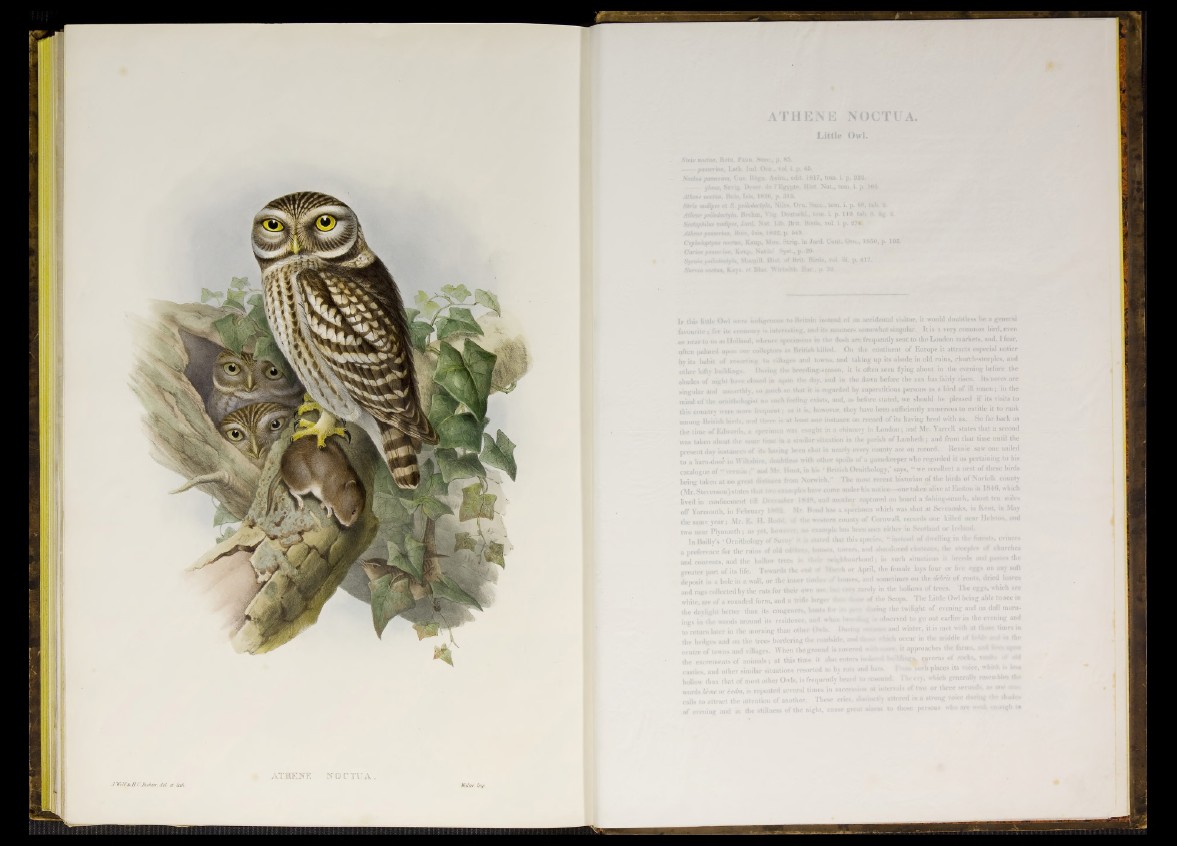
ATHENE NOCTUÀ.
Little Owl.
palmt
habil
other I
th is
the time o f Edwards, a sp
present day instances of tl
to a barn-door in W iltsbir
catalogue o f “ v ermm; »
being taken a t no great Hi
(Mr. Stevenson) states tiuvi
lived i n . confinement till
off Yarmouth, in Februar
the same year j Mr. E. R
two near Plymouth; as y<
In Bailly’s ‘ Ornithology
a preference for the rums
and convents, and the ho
part o f its life. Towards the end 4#
in a hole in a wall, o r the inner tomb
i collected by the rats for their own o-
•i> of a rounded form, and a trifle lari
ight better than its congeners buns
the woods around its residence, and
11 later in the morning than other ()v
greater
deposit
and rag
white, I
the dai
the hedges and on the tr<
centre of towns and villages. When the ground is
the excrements of animals ; a t this time it also
castles, and other similar situations resorted to b
hollow than that of most o ther Owls, is frequently
words herne or ëedm, is repeated several times in s
calls to attract the attention o f another. These
it would doubtless be a general
I t is a very common bird, even
lesh are frequently sent to the London markets, and, I fear.
On the continent o f Europe it attracts especial notice
and taking up its abode in old ruins, chur'ch-steeples, and
m, it is often seen flying about in the evening before the
in the dawn before the sun has fairly risen. Its notes are
•ded by superstitious persons as a bird of ill omen ; in the
id, as before stated, we should be pleased if its visits to
r, they have been sufficiently numerous to entitle it to rank
nice on record o f its having bred with its. So far back as
chimney in London ; and Mr. YarreU states that a second
•arly every county are on record. Rennie saw one nailed
¡poils o f a gamekeeper who regarded it as pertaiuing to bis
tisb Ornithology,’ says, " we recollect a nest o f these birds
The most recent historian o f the birds o f Norfolk county
e under his notice—one taken alive a t Easton in 1846, which
»other captured 011 board a fishing-smack, about ten miles
a specimen which was shot at Sevenoaks, in Kent, in May
county of Cornwall, records one killed near Helston, and
has been seen either in Scotland or Ireland.
(hbourhood ; in such situations k breeds and ¡«asses the
oh or April, the female lays four or five eggs on any soft
bonnes, and sometimes ou the débris o f roots, dried leaves
i trrv rarely in the hollows o f trees. The eggs, which are
. 'hose of the Scops. The Little Owl being able to see in
irm ai(«‘v Haring the twilight of evening aud on dull morn-
ug i t observed to go out earlier in the evening and
3 and winter, it is met with at those times in
High tO